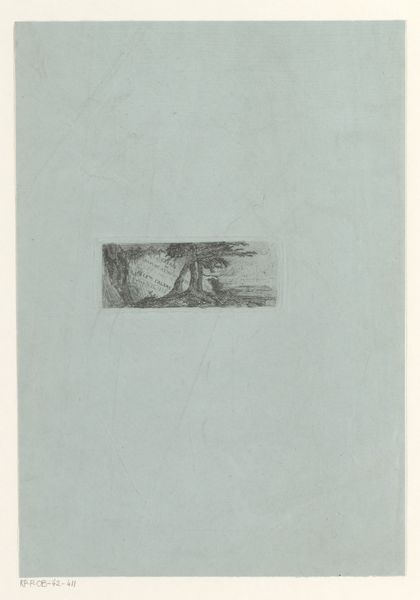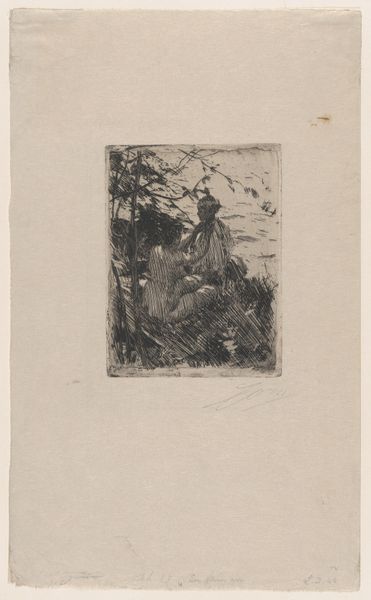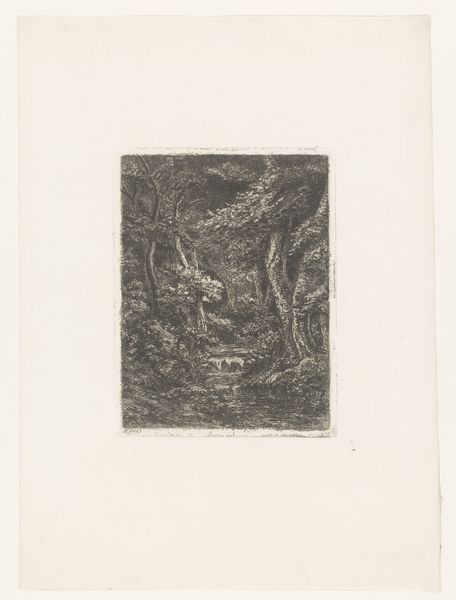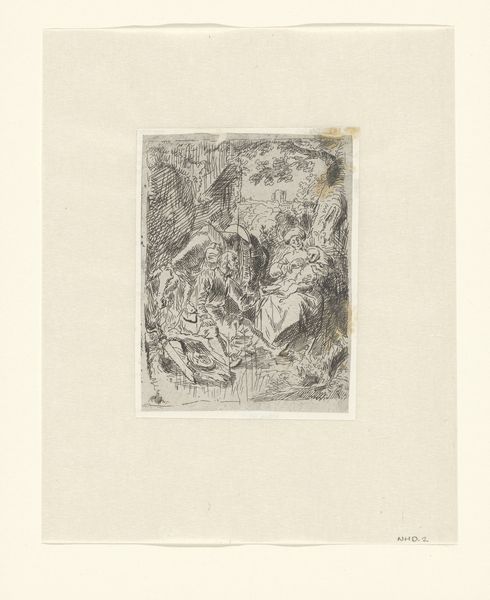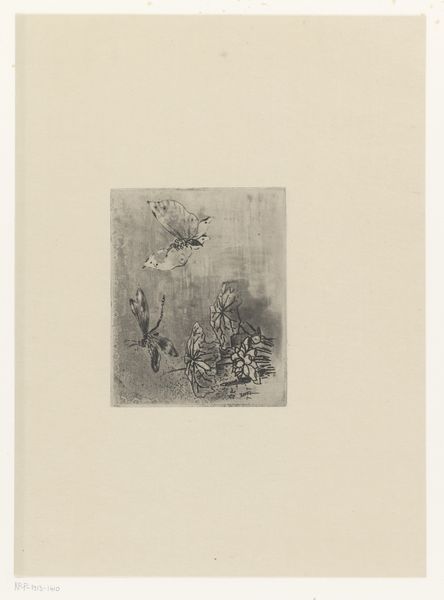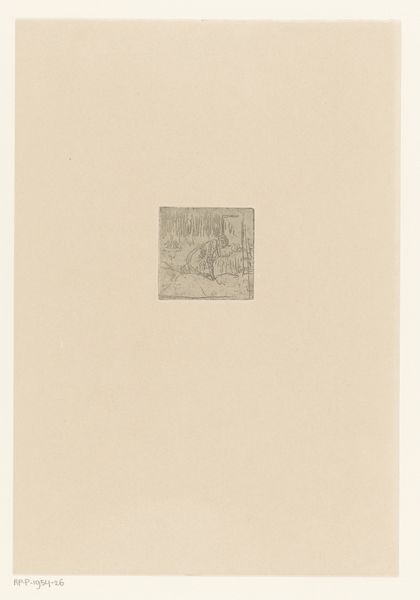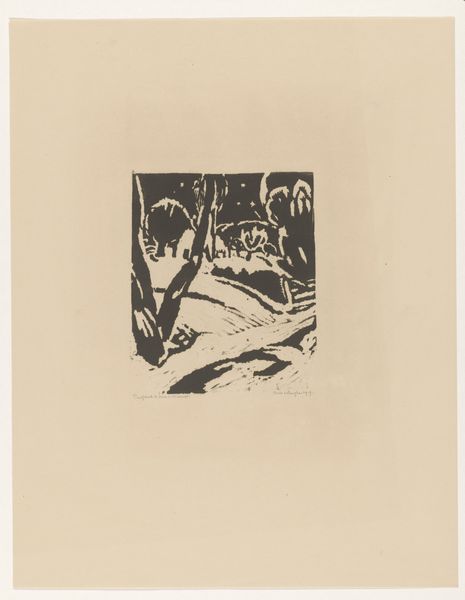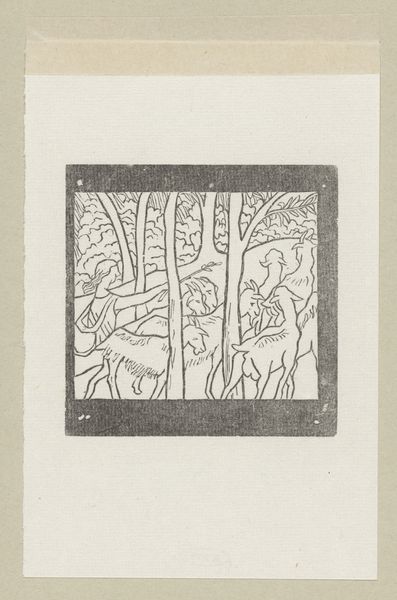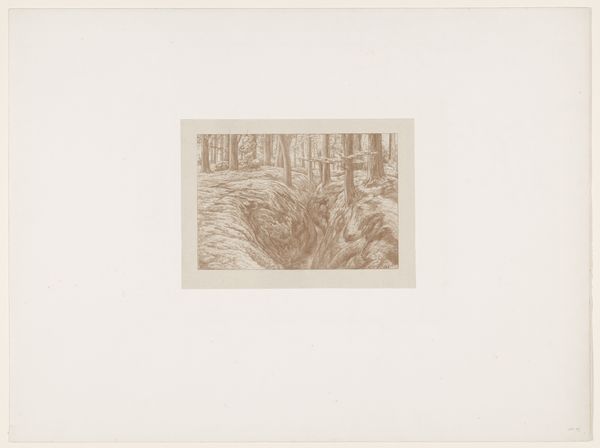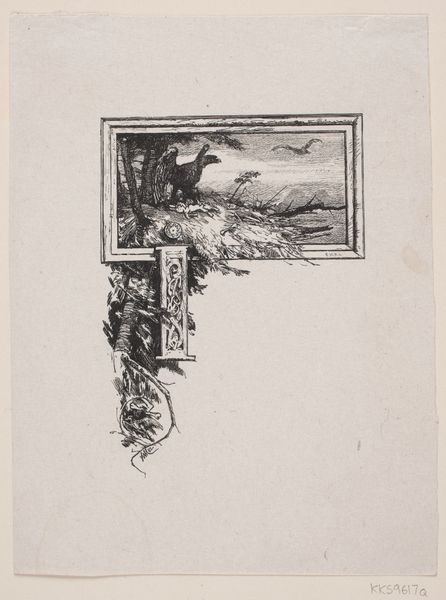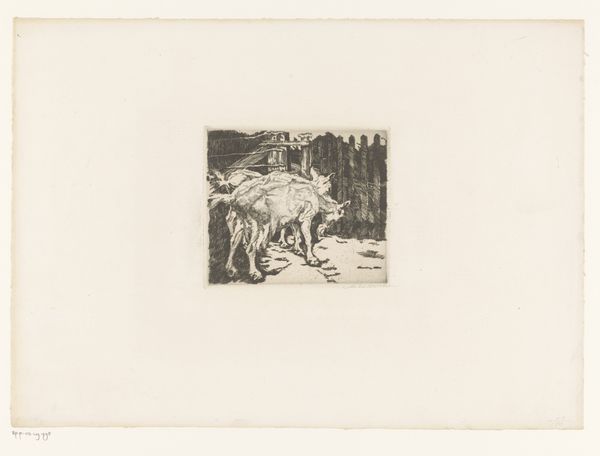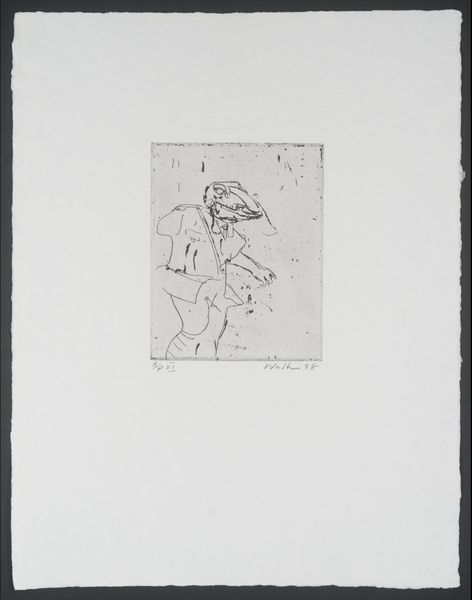
drawing, print, woodcut
#
tree
#
drawing
# print
#
landscape
#
figuration
#
woodcut
#
line
Dimensions: height 134 mm, width 111 mm
Copyright: Rijks Museum: Open Domain
Curator: So peaceful. It reminds me of Sunday afternoons reading under the old oak tree in my backyard, filtered light and the rustling of leaves creating a perfect sanctuary. What are your initial impressions? Editor: You’re looking at “Figuur zittend onder een boom,” which translates to “Figure Sitting Under a Tree.” This woodcut was created in 1917 by the Dutch artist John Dunge. It's an interesting work within the context of early 20th-century figuration and landscape art, where there was an urge toward naturalism yet stylized approach. Curator: Stylized, definitely. It's interesting how Dunge uses such simple, almost harsh lines to depict a scene that feels so restful. The black and white contrast gives it an immediate graphic punch. Like an old storybook illustration somehow imbued with melancholy. Editor: The strong contrast is key, don’t you think? There is a graphic quality from that choice of medium and also an intimacy in such scaled down imagery. Prints allowed wider dissemination and also an ease in their viewing experience; intimate, close up, at a leisurely pace. Curator: Absolutely, and consider when it was made, amidst the turbulence of World War I, its restful subject is a retreat, an attempt to focus on enduring natural and personal themes to push against anxiety caused by constant external shocks. The lone figure there reminds me a lot of Wordsworthian romantic ideals. A small subject contained and centered in their own space. Editor: Indeed. And technically, look at the intricate way he's carved the foliage of the tree, juxtaposed with the relative smoothness of the hill and the figure's form. The linework in that tree canopy feels almost vibrating, capturing a feeling rather than a literal depiction of leaves. I find his use of the black and white creates an immediacy—like a primal landscape that existed outside our immediate consciousness. Curator: Well said, it gives an echo that stays in your mind well after viewing, I wonder if visitors feel similarly drawn in? Editor: I think so, that contrast stays with us and leaves plenty of space for self reflection and wonder to begin to build…
Comments
No comments
Be the first to comment and join the conversation on the ultimate creative platform.
